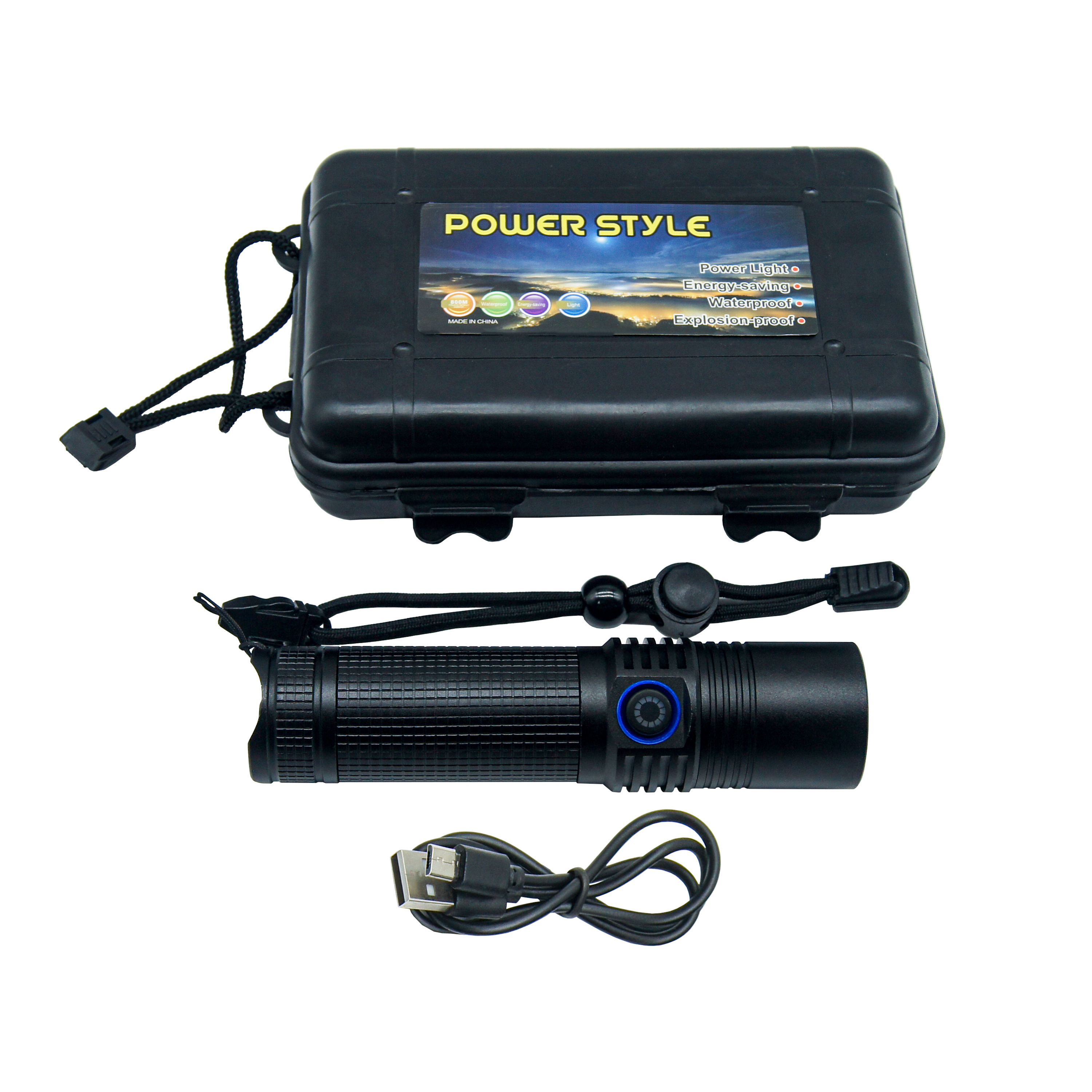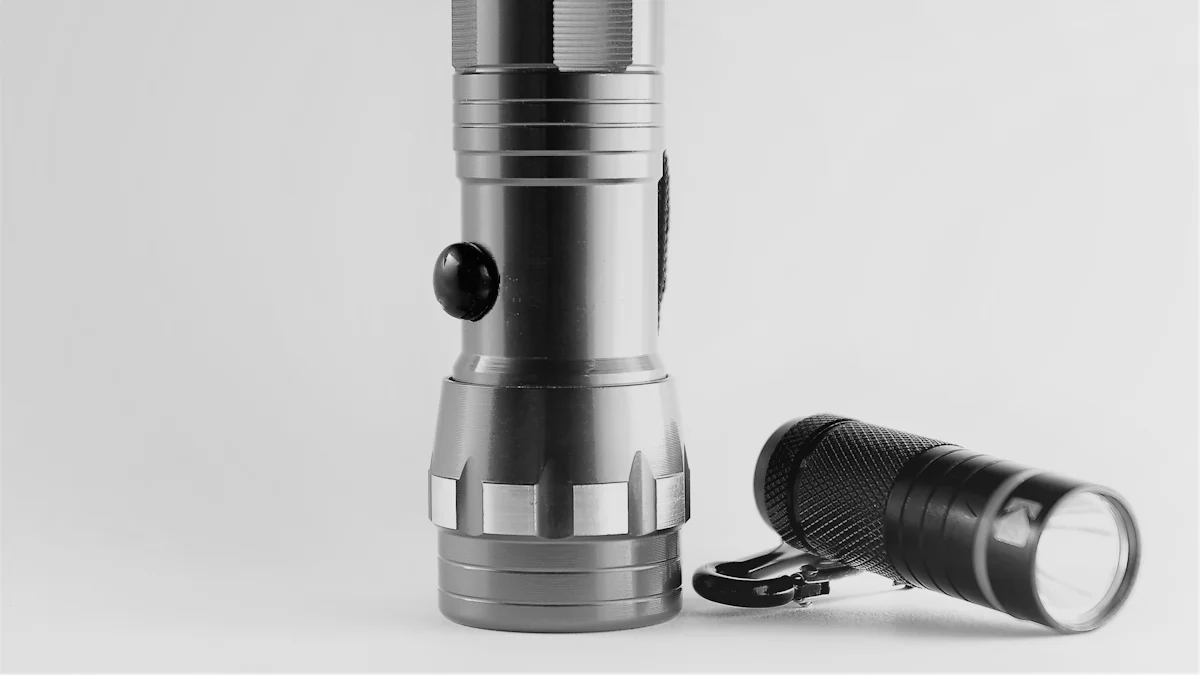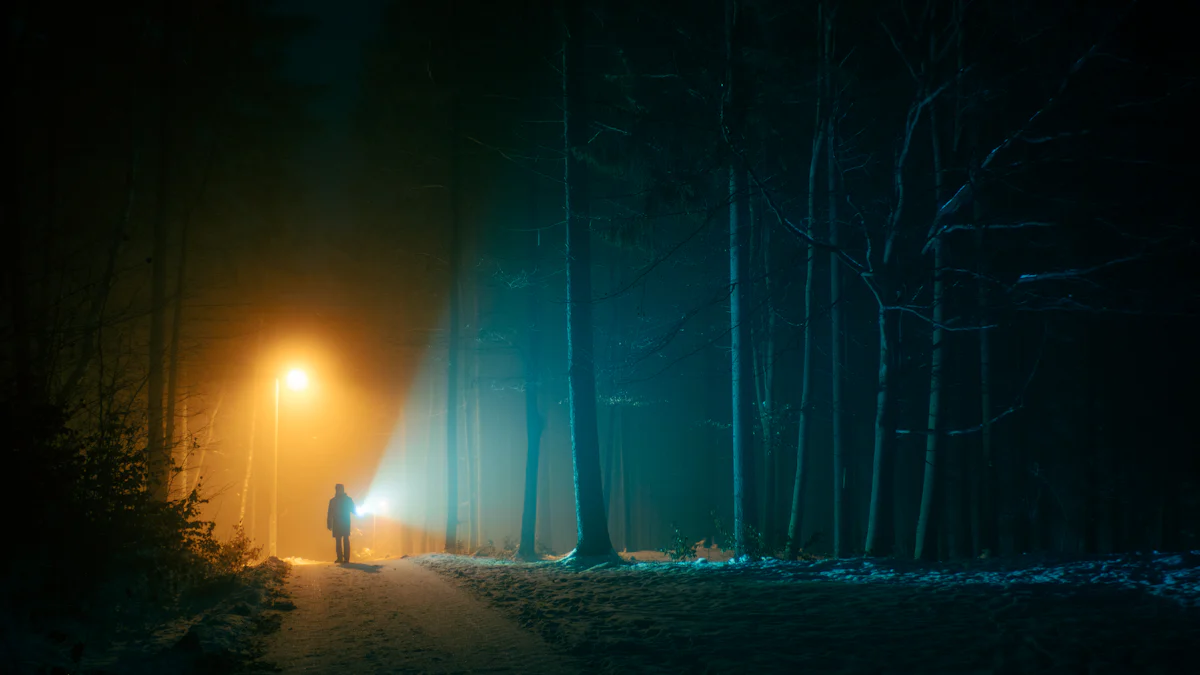The Impact of Flashlight Size and Weight on Portability

Have you ever struggled to carry a flashlight that felt too bulky or heavy? Size and weight play a crucial role in how easily you can take a portable flashlight with you. A portable flashlight should meet your needs without adding unnecessary weight. Understanding these factors ensures you choose a practical and convenient portable flashlight.
Key Takeaways
Pick a small flashlight for daily use. It is easy to carry and great for emergencies because it is light and small.
Use medium-sized flashlights for a mix of power and portability. They are brighter and have more features but are not too big.
Think about the pros and cons when choosing a flashlight. Small ones are easy to carry but less bright, while bigger ones are powerful but heavier.
Understanding Portability in Flashlights
What makes a flashlight portable?
When you think about a portable flashlight, what comes to mind? It’s probably something small, light, and easy to carry. These are the key characteristics that make a flashlight portable. A compact size ensures it fits in your pocket or bag without taking up too much space. A lightweight design means you can carry it for long periods without feeling weighed down. Plus, ease of use is essential. You want a flashlight that’s simple to operate, especially during outdoor adventures when time matters most.
The materials used in flashlights also play a big role in portability. For example, lightweight materials like aluminum alloy and ABS plastic are common. Aluminum alloy is not only light but also helps prevent overheating during use. ABS plastic, on the other hand, offers durability and chemical resistance, making it perfect for tough conditions. Here’s a quick look at how these materials impact portability:
Material | Properties | Impact on Portability |
|---|---|---|
Acrylonitrile Butadiene Styrene (ABS) | Durability, Chemical resistance | Ensures longevity and safety in demanding conditions |
Aluminum Alloy | Lightweight, Heat conduction | Enhances portability and prevents overheating during use |
The role of size and weight in portability
Size and weight have a direct impact on how portable a flashlight is. A smaller flashlight is easier to carry, especially if you’re hiking or camping. It won’t take up much room in your gear. Lightweight flashlights are also more comfortable to hold for extended periods. However, there’s a trade-off. Smaller and lighter flashlights might not have the same power or battery life as larger ones.
On the other hand, larger flashlights can offer more brightness and durability. They’re great for tasks where you need extra power, like searching in the dark or working outdoors. The best LED flashlight for you depends on finding the right balance between size, weight, and your specific needs.
Pros and Cons of Different Flashlight Sizes and Weights

Compact portable flashlights: Benefits and limitations
Compact flashlights are perfect for everyday use. Their small size and light weight make them easy to carry in your pocket, bag, or even on a keychain. You’ll find them incredibly useful for simple tasks like finding dropped items, lighting your path during a nighttime walk, or even signaling for help in emergencies. They’re also great for outdoor activities like camping or hiking, where portability is key.
These flashlights are versatile and can even enhance personal safety. For example, they can illuminate dark areas or disorient an attacker if needed. However, compact flashlights often have shorter battery life and lower brightness compared to larger models. If you need extended use or high luminosity, a compact flashlight might not be the best choice.
Medium-sized flashlights: Striking a balance
Medium-sized flashlights offer a great middle ground. They’re portable enough to carry without hassle but still pack more power than compact models. Many of these flashlights come with advanced features like multiple lighting modes, which make them ideal for outdoor professionals or hobbyists. Their lightweight construction ensures they won’t weigh you down, even during long hikes or work shifts.
If you’re looking for the best LED flashlight for both portability and functionality, a medium-sized option might be your answer. These flashlights balance size, weight, and performance, making them suitable for a wide range of activities.
Large flashlights: When size and weight are advantageous
Large flashlights may not be as portable, but they shine in situations where power and durability matter most. They’re essential for outdoor adventures, night expeditions, or tasks requiring high luminosity and long-range visibility. Emergency personnel, like police or rescue workers, often rely on these flashlights for their rugged design and powerful brightness.
Many large flashlights feature rechargeable batteries, ensuring longer burn times and eco-friendliness. Their sturdy construction makes them reliable in harsh conditions, whether it’s rain, dust, or extreme temperatures. If you need a flashlight for demanding tasks, the impact of size and weight becomes a worthwhile trade-off.
Choosing the Right Flashlight for Your Needs

Matching flashlight size and weight to your activities
When choosing the right flashlight, think about how you’ll use it. Are you planning a camping trip, or do you need something for everyday tasks? For outdoor adventures, a lightweight and compact portable flashlight is ideal. It won’t weigh you down, and it fits easily in your gear. If you’re working on home repairs or need a flashlight for emergencies, a medium-sized option might be better. It offers more power without being too bulky.
For professionals like rescue workers or security personnel, larger flashlights can be a game-changer. Their size and weight provide durability and high brightness, which are essential for demanding tasks. Matching the flashlight’s size and weight to your activities ensures you get the most out of it without compromising portability.
Evaluating trade-offs for optimal portability
Every flashlight comes with trade-offs. Compact models are easy to carry but may lack brightness or battery life. Larger ones deliver more power but can feel heavy. To evaluate these trade-offs, consider key components like brightness, runtime, and durability.
Here’s a quick breakdown to help you decide:
Component | Description |
|---|---|
Light Output | Measures brightness in lumens, indicating the total light energy emitted. |
Beam Distance | Shows how far the light reaches, measured in meters. |
Runtime | Indicates how long the flashlight lasts before the light dims by 10%. |
Water Resistance | Assesses performance in wet conditions. |
Impact Resistance | Tests durability against drops and impacts. |
By weighing these factors, you can find the best LED flashlight that balances size, weight, and performance.
Practical tips for testing flashlight portability
Before buying a flashlight, test its portability. Start by checking its brightness. Use a light meter or a reflective box to measure lumens and see how the light performs over time. Next, test the battery power. Turn the flashlight on its highest setting and note how long it lasts. Look for models with common battery types for convenience.
Don’t forget to evaluate light modes. Switch between brightness levels to see how easy it is to operate. Finally, test durability. Drop the flashlight from about 10 feet or submerge it in water to check its impact resistance and waterproofing. These simple tests ensure you choose a flashlight that’s portable and reliable for your needs.
Size and weight significantly impact how portable a flashlight feels in your hand or gear. Compact models, like the Fenix E03R V2.0 or Olight Baton 3, are perfect for everyday tasks and emergency signaling. Larger flashlights excel in rugged conditions, offering durability and power for unexpected uses of flashlights, such as emergency rescue.
When choosing, think about your needs. Do you want something lightweight for daily carry or a durable option for demanding tasks? Modern designs, like slim profiles and magnetic bases, make portability easier than ever. By balancing these factors, you’ll find a flashlight that fits your lifestyle perfectly.
FAQ
What is the best flashlight size for everyday use?
A compact flashlight works best for daily tasks. It’s lightweight, fits in your pocket, and provides enough brightness for most situations.
Are larger flashlights harder to carry?
Yes, larger flashlights can feel bulky. However, they’re ideal for tasks requiring high brightness or durability, like outdoor adventures or emergency situations.
How do I test a flashlight’s portability?
Check its weight, size, and ease of use. Carry it in your pocket or bag, and test its brightness and battery life during regular activities.
See Also
Comparing Police Flashlights And Standard Flashlights: A Guide
Exploring The Visibility Range Of Rechargeable Flashlights
Choosing Between Zoomable Flashlights And Reflector Caps
